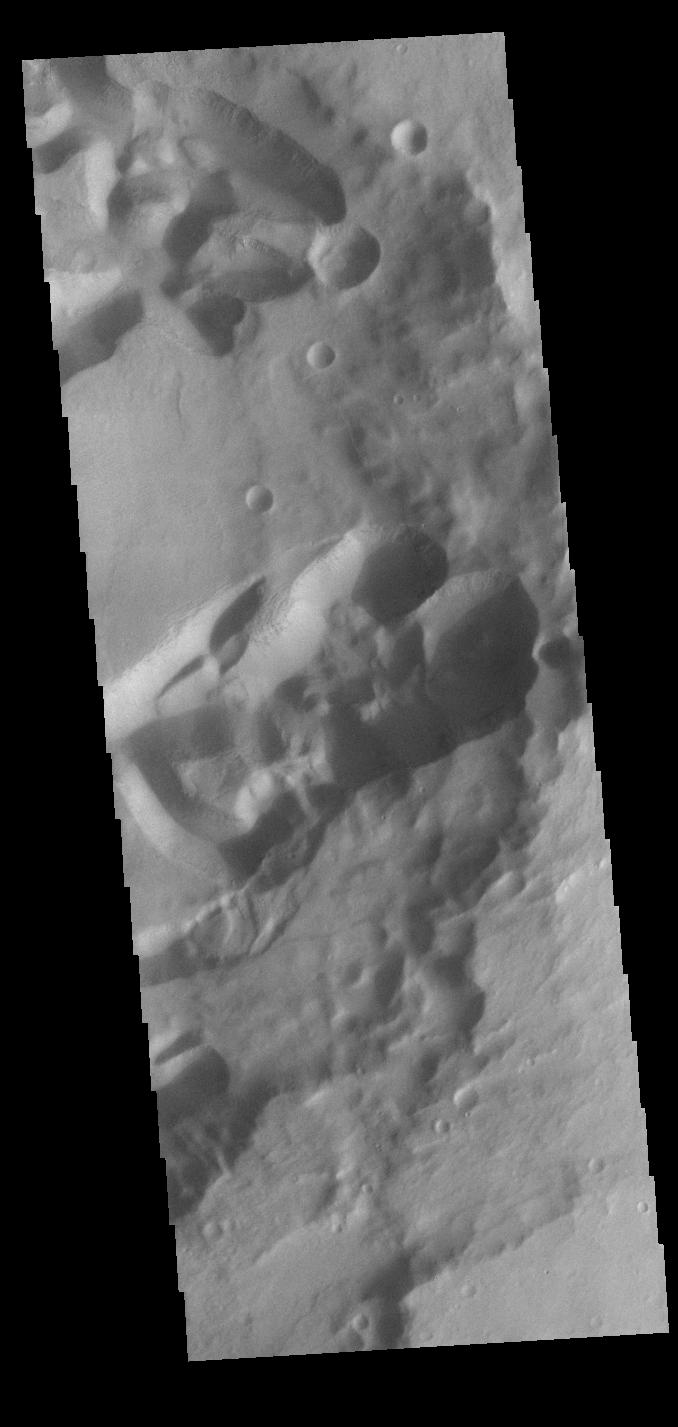
|
Mangala Fossae
- Click the image above for a larger view
- Full-Res JPEG (678 x 1427) (71.9 kB)
- Full-Res TIFF (678 x 1427) (705.6 kB)
Caption:

Context image
This VIS image shows the intersection of Mangala Fossae and an impact crater. Mangal Fossae is a long linear depression called a graben, and was formed due to extensional tectonic stresses. In this image the graben crosses through a crater. Impact crater formation changes the surface and near surface materials, usually creating much stronger rocks due to the melting of the preexisting surface. The extensional stresses forming the graben interacted with this material and produced the jumble of depressions we see today within the crater.
Orbit Number: 82251 Latitude: -19.3232 Longitude: 207.574 Instrument: VIS Captured: 2020-06-29 20:38
Background Info:
Please see the THEMIS Data Citation Note for details on crediting THEMIS images.
NASA's Jet Propulsion Laboratory manages the 2001 Mars Odyssey mission for NASA's Science Mission Directorate, Washington, D.C. The Thermal Emission Imaging System (THEMIS) was developed by Arizona State University, Tempe, in collaboration with Raytheon Santa Barbara Remote Sensing. The THEMIS investigation is led by Dr. Philip Christensen at Arizona State University. Lockheed Martin Astronautics, Denver, is the prime contractor for the Odyssey project, and developed and built the orbiter. Mission operations are conducted jointly from Lockheed Martin and from JPL, a division of the California Institute of Technology in Pasadena.
Cataloging Keywords:
| Name | Value | Additional Values |
|---|---|---|
| Target | Mars | |
| System | ||
| Target Type | Planet | |
| Mission | 2001 Mars Odyssey | |
| Instrument Host | Mars Odyssey | |
| Host Type | Orbiter | |
| Instrument | Thermal Emission Imaging System (THEMIS) | |
| Detector | ||
| Extra Keywords | Crater, Grayscale, Impact, Thermal | |
| Acquisition Date | ||
| Release Date | 2020-10-07 | |
| Date in Caption | 2020-06-29 | |
| Image Credit | NASA/JPL-Caltech/ASU | |
| Source | photojournal.jpl.nasa.gov/catalog/PIA24143 | |
| Identifier | PIA24143 | |
